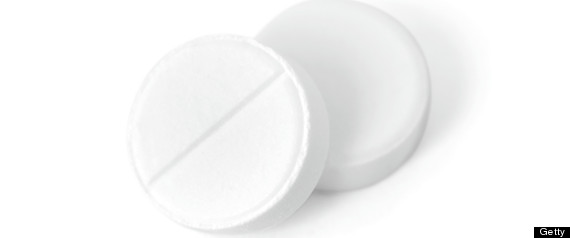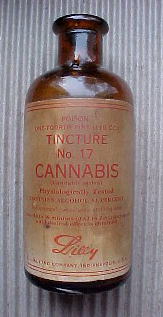General Discussion
Related: Editorials & Other Articles, Issue Forums, Alliance Forums, Region Forums;}4 commonly consumed cannabinoids that are 100% LEGAL!
CACAO

Cacao is the dried seed of the cacao tree that’s used to make cocoa powder and chocolate. The cacao tree is a tropical flowering tree native to the Americas. Its scientific name, Theobroma cacao, means “food of the gods.” The first instances of cacao processing and culinary use can be traced back to the ancient cultures that once inhabited what is now central and southern Mexico.
The cacao tree can grow to a height of 20 feet and the cacao seeds, or beans, are contained within the tree’s seed pods. Each cacao pod contains 30 to 50 seeds. Mature cacao trees are harvested several times each season, typically between the months of October and April. In Mexico, the cacao tree is cultivated as far north as Veracruz on the central Gulf Coast and Colima on the central Pacific Coast. Mexico has been producing cacao for more than 3,500 years. Yet despite its long history of cacao production, Mexico currently only produces less than one percent of the world’s cacao and today, the majority of the world’s cacao production takes place on the continents of Africa and Asia.
The Olmecs are believed to have been the first of the ancient Mesoamerican cultures to cultivate and use the cacao tree. The Olmecs were the first major civilization to inhabit Mexico and their civilization flourished between 1500 B.C. and 400 B.C. The Olmecs lived in the tropical lowland areas of central and southern Mexico in what are now the states of Veracruz, Tabasco and Chiapas.
In addition to the cultivation and use of the cacao tree, the Olmecs are credited with inventing the Mesoamerican Long Count calendar, the concept of zero, the Mesoamerican ballgame and the first writing system in the Western Hemisphere. The ancient Olmec civilization is best known for their large carved stone sculptures of heads and today, you’ll find these Olmec heads and other Olmec artifacts on display in the Museo de Antropologia (Museum of Anthropology) in Xalapa, Veracruz and the outdoor Parque-Museo La Venta (La Venta Park and Museum) in Villahermosa, Tabasco.
http://www.visitmexico.com/en/cacao-haciendas-in-tabasco-mexico

The Goddess of Chocolate/Cocoa had humble but honorable origins as a Mayan Goddess. Named Ixcacao, she was an ancient fertility goddess, an earth goddess in a matriarchal society where gathering crops and seeing to it that everyone was fed was woman's work.
Banishing hunger and providing for the safety and security of the people was her divine responsibility.
The creation myths told of a great flood, devastating droughts and earthquakes that destroyed the gods' four previous attempts to create a race of humans that would love them and sing songs about their glory.
After all, the human race had been decimated by cataclysmic events before. . . this wasn't the first attempt by the gods to repopulate the world with humans who, like them. could think and speak, creatures who would be grateful to them, and honor and praise the gods for giving them their lives.
http://www.goddessgift.com/goddess-myths/Mayan-goddess-chocolate.html

The cacao bean has played an important role in Mesoamerican history. It was used not only for food but also for medicinal purposes and as offerings to the gods. It was a central part of their social, economic, and belief systems. It was so revered that it used to be used only in religious ceremonies. This was later relaxed and the upper class drank it at feasts. Even then it never lost its religious importance.
When Catholic missionaries came to convert the natives they were appalled that the natives would bring chocolate and drink during mass (they saw it as the breaking of fast) and attempted to ban it. Of course, the natives bringing chocolate and drinking it was their way of worshipping God, but the church was determined to stop them. The natives raised a big enough fuss that eventually the Pope declared that they were not breaking fast by drinking liquids.
This is where the Christ of Cacao enters. In the sixteenth century a statue of Christ was placed in a chapel in Mexico City. This chapel was adjacent the Templo Mayor, a temple of the Aztecs. When the natives went to worship, they left cacao beans as alms much in the same way they would have left offerings for their own Gods at Templo Mayor. These offerings made the priests at the cathedral very wealthy as the cacao bean was an form of currency. Priests and other religious officials would encourage the natives to leave these offerings. Thomas Gage, a friar during the seventeenth century became so rich off of the cacao offerings that when he left his post as a religious official in Colonial America, he left with plenty of precious stones and pearls.
The Christ of Cacao tells a story of how the ancient Latin American culture was mixed with the culture of Spain, a culture that has now become what we know as Latin America today.
http://50latamobjects.wordpress.com/2013/02/06/el-senor-del-cacao-the-lord-of-cacao-or-the-christ-of-cacao/

Although anandamide was first identified in chocolate in 1996, a recent paper reveals that humans have been consuming chocolate for both medicine and pleasure for hundreds of years. Starting to sound more like marijuana? It gets better.
But anandamide (AEA) – which is also produced naturally by the human body – isn’t the only chemical in chocolate that mimics the activity of cannabis compounds (known as cannabinoids). In fact, researchers have identified a number of chocolate-derived chemicals that can activate the human cannabinoid system, both directly and indirectly.
Chemicals like 2-AG – a cannabinoid also found in human milk – and oleamide – a sleep-inducing chemical that increases anandamide levels – are actually present in chocolate at higher concentrations than anandamide itself.
According to Dr. Daniele Piomelli, one of the scientists who first identified cannabinoids in chocolate, these chemicals likely play a larger role than anandamide in the pleasure that comes from eating chocolate. On the other hand, Piomelli told Science News that the cannabinoid activity of chocolate may be more specific than THC, since anandamide already exists in the brain to control certain functions.http://www.truthonpot.com/2013/07/28/your-brain-on-chocolate-marijuana-like-chemicals-explain-why-we-crave-it/
Acetaminophen
 ?6
?6
Acetaminophen received its name from the actual chemistry of the drug. Its chemical name is para-acetylaminophenol, and this is where the name acet-amino-phen comes from. When scientists or medical professionals refer to acetaminophen, they use the shortened form of its name: APAP.
The FDA patent for acetaminophen was issued in 1951, but it was not until two years later that the Sterling-Winthrop company began selling the drug. At the time aspirin and prescription were available and dominated the market. Yet, the public needed an over-the-counter alternative to aspirin that children could take. This demand increased for adults as aspirin use was not safe for adults with ulcers. In 1955, the brand Tylenol was release by McNeil Laboratories.
Surprisingly, under this brand name it was marketed to parents as an elixir to give their children for pain and fever. It was not until 1956 that this medication was sold abroad to England. However, the real popularity of acetaminophen was not until the mid 1970s to 1980s. By then, sales of aspirin had declined and phenacetin was taken off the market.
http://medicinereport.com/article/history-acetaminophen
http://en.wikipedia.org/wiki/Acetaminophen
Echinachea

The 18th century German botanist, Conrad Moench, named the genus Echinacea, which comes from the Greek echinos, meaning hedgehog, referring to the spiny, round seedhead which reminded him of a hedgehog or sea urchin. The species name, augustifolia, means “narrow-leaved”. In some older literature, the names of Rudbeckia and Brauneria were used for this genus instead of Echinacea.
Early settlers soon adopted the plant’s medicinal value from Native Americans as a remedy for colds and influenza, and took it to Europe in the 17th century.
Schar describes a typical scenario of herbs being introduced to the established medical society. A German country doctor discovered this remarkable American plant and its benefits and offered to show doctors its powers at a medical conference. He said that he would allow a snake to bite him and then cure that bite with nothing but echinacea. Nevertheless, the doctors ignored him. Dr. Meyer then presented this same offer to two other doctors named King and Lloyd, electics who belonged to a now-extinct branch of medicine. Uncharacteristically, these two doctors listened to the message and not the messenger and looked further into the herb’s power. Despite initial doubts, the herb was introduced into the 1887 Materia Medica.
American Eclectics, a group of doctors prominent from 1830 to 1930 who used botanicals in their practices, were a major force in bringing echinacea to the forefront of herbal medicine. They promoted it as a blood purifier for venereal disease, as well as an agent for treating migraines, rheumatism, tumors, malaria, and hemorrhoids. After their decline in the 1930s, the herb also fell into disfavour, but regained its stature when interest in herbal medicine revived in the 1970s and 1980s.
http://www.cloverleaffarmherbs.com/echinacea/#sthash.q7S1zIoe.dpbs
http://informahealthcare.com/doi/abs/10.1080/10799890600942674?journalCode=rst
Green Tea

Wei Jin Northern and Southern Dynasties (3rd century -6th century)
During the period of the Wei Jin Northern and Southern Dynasties (AD 220-589), the popularity of drinking tea soared and tea slowly changed from a luxury item into a drink commonly consumed by the public, as simple basic drying processes were introduced that increased its availability and allowed the introduction of scented teas, which helped lessen the bitterness green teas had at that time.
Tang Dynasty (7th century -10th century)
During the Tang Dynasty (AD 618-907) tea drinking became ingrained as a fundamental part of Chinese society, with a whole culture around tea drinking springing up and the introduction of formalized “tea ceremonies”. During this time, the process of steaming the tea leaves was gradually refined, allowing the production of better tasting, less bitter, green teas.
Song Dynasty (10th century -13th century)
By the time of the Song Dynasty (AD 960-1279) tea drinking had become an integral part of the daily life of all Chinese, in a similar way to how afternoon tea became ingrained in the English culture. The use and production of so-called “tribute teas” - those produced to be presented to the emperor and other high officials – became an important part of royal culture and a source of government taxation. The production of these tribute teas, such as Xihu Longjing and Dongting Biluochun, had fueled rapid innovation in the types and quality of teas produced, as people competed for royal favour. One of the most famous of these tribute teas was dragon-phoenix ball tea, which was commonly grown and presented to the royal family. A special type, called Miynlong tea, was specially packed in a yellow silk and commonly presented to the emperor.

Ming Dynasty (14th century -17th century)
During the Ming Dynasty (1368-1644) the first emperor, Zhu Yanzhang, formally abolished the tradition and government control of giving tribute tea. Once that happened, and a golden age of green tea innovation resulted. Production flourished and new production techniques, types and styles of tea were quickly tried. It was during this period that the use of loose leaf tea became dominant. Roasting (dry heating) of the tea to “fix” it to stop oxidation was introduced during the 16th century, and remains to this day the primary technique used to make green tea.http://www.teavivre.com/info/green-tea-history/
EGCG is the most abundant catechin in tea and is a potent antioxidant that may have therapeutic applications in the treatment of many disorders (e.g. cancer). It is found in green tea, but not black tea; during black tea production, the catechins are converted to theaflavins and thearubigins.[3] It is also found in various vegetables, nuts, as well as carob powder at 109 mg per 100g.[4] In a high temperature environment, an epimerization change is more likely to occur; however as exposure to boiling water for 30 straight minutes leads to only a 12.4% reduction in the total amount of EGCG, the amount lost in a brief exposure is insignificant. In fact, even when special conditions were used to create temperatures well above that of boiling water, the amount lost increased only slightly.[5]http://en.wikipedia.org/wiki/Epigallocatechin_gallate
Sakla and Lorson found that EGCG increases the number of SMN transcripts in spinal muscular atrophy cells, most probably through modulation of alternative splicing.[28]
Neurodegeneration
EGCG is a natural chelator and has been shown to reduce iron-accumulation in instances of neurodegenerative diseases like dementia, Alzheimer's, and Parkinson's.[29] Parc de Salut Mar and Instituto Hospital del Mar de Investigaciones Médicas in Spain are conducting a clinical trial of EGCG as a potential treatment for intellectual impairment in people with Down Syndrome and Fragile X[30]
Cannabinoid 1 receptor, CB1 receptor Activity
EGCG has a binding affinity of Ki=33.6?M towards the first cannabinoid receptor, CB1.[31]http://en.wikipedia.org/wiki/Epigallocatechin_gallate
This compound possesses two epimers. The most common, (+)-gallocatechin (GC), CAS number 970-73-0, is found notably in green tea. Other sources of (+)-gallocatechin are bananas,[1] persimmon and pomegranate.[citation needed]. The other enantiomer is called (-)-gallocatechin or ent-gallocatechin.
This compound had been shown to have moderate affinity to the human cannabinoid receptor,[2] which may contribute to the health benefits found by consuming green tea.http://en.wikipedia.org/wiki/Gallocatechin

Uncle Joe
(58,403 posts)Now I'm going to eat some Halloween Dark Chocalate in honor of the Olmecs. ![]()
Thanks for the thread, Miranda4peace.
Miranda4peace
(225 posts)Uncle Joe
(58,403 posts)Miranda4peace
(225 posts)dipsydoodle
(42,239 posts)Miranda4peace
(225 posts)It was worth it, might as well spend time on something I genuinely care about.
MindMover
(5,016 posts)Miranda4peace
(225 posts)newfie11
(8,159 posts)Thanks for posting. I must now go rob my Halloween dark chocolate.
polichick
(37,152 posts)Miranda4peace
(225 posts)kydo
(2,679 posts)Thanks and Happy Halloween right back at ya ![]()
![]()
![]()
MannyGoldstein
(34,589 posts)The stuff's very dangerous, can cause severe liver damage in doses just a wee bit higher than what's on the label:
http://www.nlm.nih.gov/medlineplus/ency/article/002598.htm
Dozens of people die from it every year in the US.
Miranda4peace
(225 posts)And often while someone is sick, it is very easy to overdose, because many cold and flu products contain acetaminophen.
I only included it in the list because it is the probably one of the most commonly consumed products in the list.
Btw, because of it's receptor affinity, its highly doubtful that a "high" could be accomplished by taking this drug.
MannyGoldstein
(34,589 posts)But I've found that the human capacity for stupidity is infinite when it comes to getting high and getting nookie. Years ago, I was at a party where we ran out of weed... so some nitwit grabbed foam rubber from a cushion that was coming apart, stuck it in a pipe then lit up. Immediately started screaming, vomiting, and frantically covering his ears to protect against (we later found out) a deafening high-pitched whine that only he could hear. I can never get that out of my brain.
Miranda4peace
(225 posts)I'm all for people realizing the freedom over their body, in full form and without any coercion or pressure to limit their choices, but I'm also a big fan of being informed about the compounds we wish to ingest.
I hope your friend didn't suffer any lasting damage, nor you from what must have been one of the nastiest odors emanating from that pipe.
MannyGoldstein
(34,589 posts)The weird thing is that many of the kids in his crowd died in the late 1990s, drug overdoses I think. I was in a different crowd that sometimes intersected his. Hopefully this fellow didn't die of emphysema or something, but that kind of stupid tends to gravitate towards all kinds of danger.
I remember it was a horrible blackblackblack smoke that he breathed out, ugh.
Eleanors38
(18,318 posts)Miranda4peace
(225 posts)Today, health care professionals may recommend ginger to help prevent or treat nausea and vomiting from motion sickness, pregnancy, and cancer chemotherapy. It is also used to treat mild stomach upset, to reduce pain of osteoarthritis, and may even be used in heart disease.
Source: Ginger | University of Maryland Medical Center http://umm.edu/health/medical/altmed/herb/ginger#ixzz2jM8CsE1u
University of Maryland Medical Center
Follow us: @UMMC on Twitter | MedCenter on Facebook
xfundy
(5,105 posts)Thank you!
Glad you enjoyed it.
DeSwiss
(27,137 posts)arthritisR_US
(7,291 posts)Happy Halloween and TY ![]()
DeSwiss
(27,137 posts)arthritisR_US
(7,291 posts)MannyGoldstein
(34,589 posts)Sorry to hear of your neuropathy, but it looks like you're not taking it lying down - and you're seeing some success!
You're probably familiar with Alpha Lipoic Acid a.k.a. Thioctic Acid for peripheral neuropathy?
DeSwiss
(27,137 posts)Along with a number of other vitamins and supplements. I changed pretty much everything in my former lifestyle after brushing up against death a couple of times back on 09'. Now, I make sure I eat no less than 80% veg everyday. I try not to eat what I call ''fear meat'' wherever and whenever possible. And with all that and with the cannaoil and DMSO, at present I seem to have reached stasis in the disease's progression and the pain is more tolerable but it never goes away completely. Not yet anyway. I'm considering moving to a cannabis-legal area, since I live in a backwards one. For cannabis to do its thing properly, it must be ingested just like the food/healing herb that it is and has been used for for centuries.




